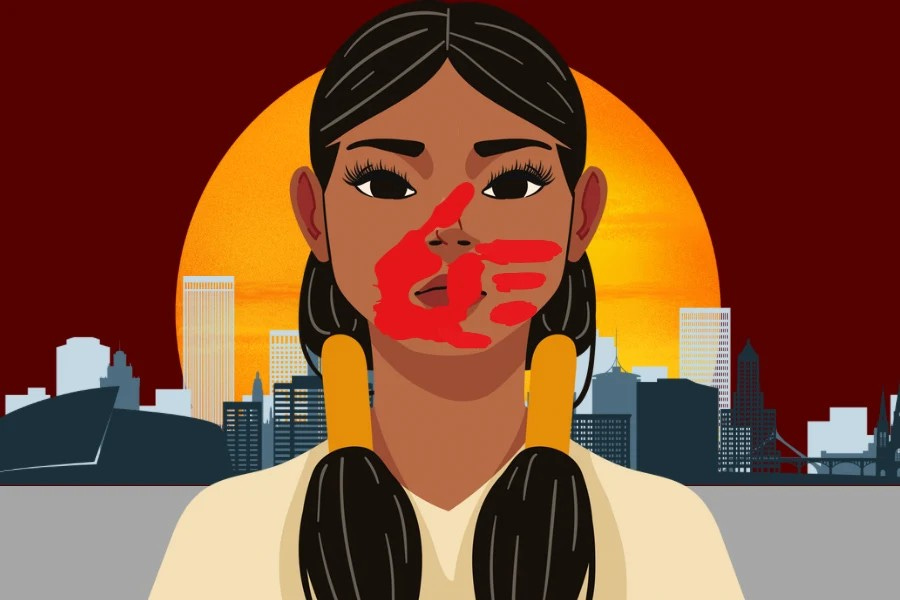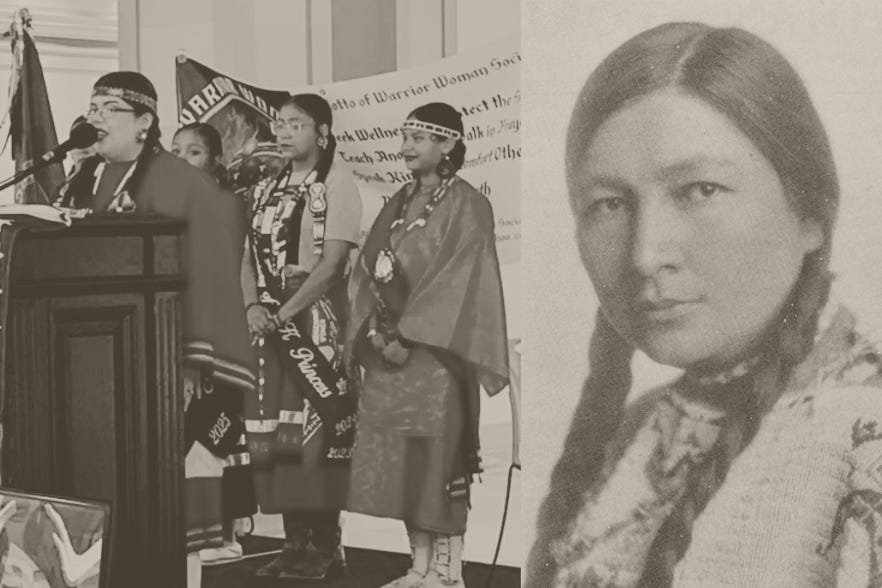This week’s VNN Weekly Digest features the first 3 stories in VNN Oklahoma’s new MMIWG2T Historical Reporting Project series
The MMIWG2T Historical Reporting Project seeks to demonstrate the connection between historical injustice and missing and murder cases today through a new dedicated series of 15-20 news stories. Indigenous journalists selected for the program received one week of in-person historical investigation training and ongoing mentorship.
This reporting was supported by the International Women’s Media Foundation’s Fund for Indigenous Journalists: Reporting on Missing and Murdered Indigenous Women, Girls, Two Spirit and Transgender People (MMIWG2T).
Is Eastern Oklahoma the site of the worst injustices committed against Indigenous girls in the US?
(OKLAHOMA) In 1923, Martha Axe Roberts (Washington) was searching for a way to care for her sick 14-month-old child. She had no money, no possessions and no way of even reaching a doctor because her car had been taken by her guardian T.A. Hill of Hominy, Oklahoma.
The reason: Martha refused to move back to Hominy from Craig County where she was living with her Shawnee family, caring for her two young children. Martha inherited one and half headrights from her former husband, an Osage man named To-wha-e-he and cycled through a series of guardians in Osage County before becoming the ward of a man named T.A. Hill.
By all accounts, Martha was a wealthy Shawnee woman with an annual income of $12,000. Calculated for inflation Martha would be earning more than $224,000 in today’s dollars. Accounts published in court records, personal accounts and letters to the Department of the Interior, showed Martha’s guardian was taking money from her estate to enrich his own lifestyle.
Before there was the MMIP movement, there was Zitkala-Ša
(OKLAHOMA) The modern Missing and Murdered Indigenous People (MMIP) movement began gaining ground in the 1980s, largely relating to public outcry of Indigenous disappearances and deaths from the Highway of Tears in British Columbia. Before long, the movement made its way to the United States. But documents in the Indian Rights Association database prove its roots on Turtle Island go back more than a century.
According to the Urban Indian Health Institute, murder is the third leading cause of death for Native women. The U.S. Department of Justice (DOJ) says American Indians and Alaska Natives (AI/AN) experience violence at a rate 2 times the national average.
Crimes against Indigenous men and women are nothing new.
Born in 1876, Zitkala-Ša, also known as Gertrude Bonnin, became a waymaker for today’s MMIP movement.
VNN needs YOUR HELP to tell more stories like these. Will you chip in?
Death of 7-year-old Ledcie Stechi highlights the injustice of the guardianship system
(OKLAHOMA) Ledcie Stechi was just seven years old when she died on August 15, 1923, in Goodwater, Oklahoma at the home of her guardian, W.J. Whiteman. However, her death could have been prevented had she received proper care and consideration.
The circumstances leading up to Ledcie’s death puts a spotlight on the reality of the guardianship system, greed, the thirst for Native wealth and land that impacted Indigenous people in Oklahoma during the allotment era that spanned from the late 1800’s through the 1920s in Oklahoma.
WEATHER ACROSS AMERICA
(NATIONAL) Excessive rainfall and severe weather throughout the Southeast, showers and thunderstorms expected from the Pacific Northwest & Northern Rockies to the Northern Plains, and record warmth expected in parts of the West & Midwest.
Want to play a more active role in our Verified News Community?










